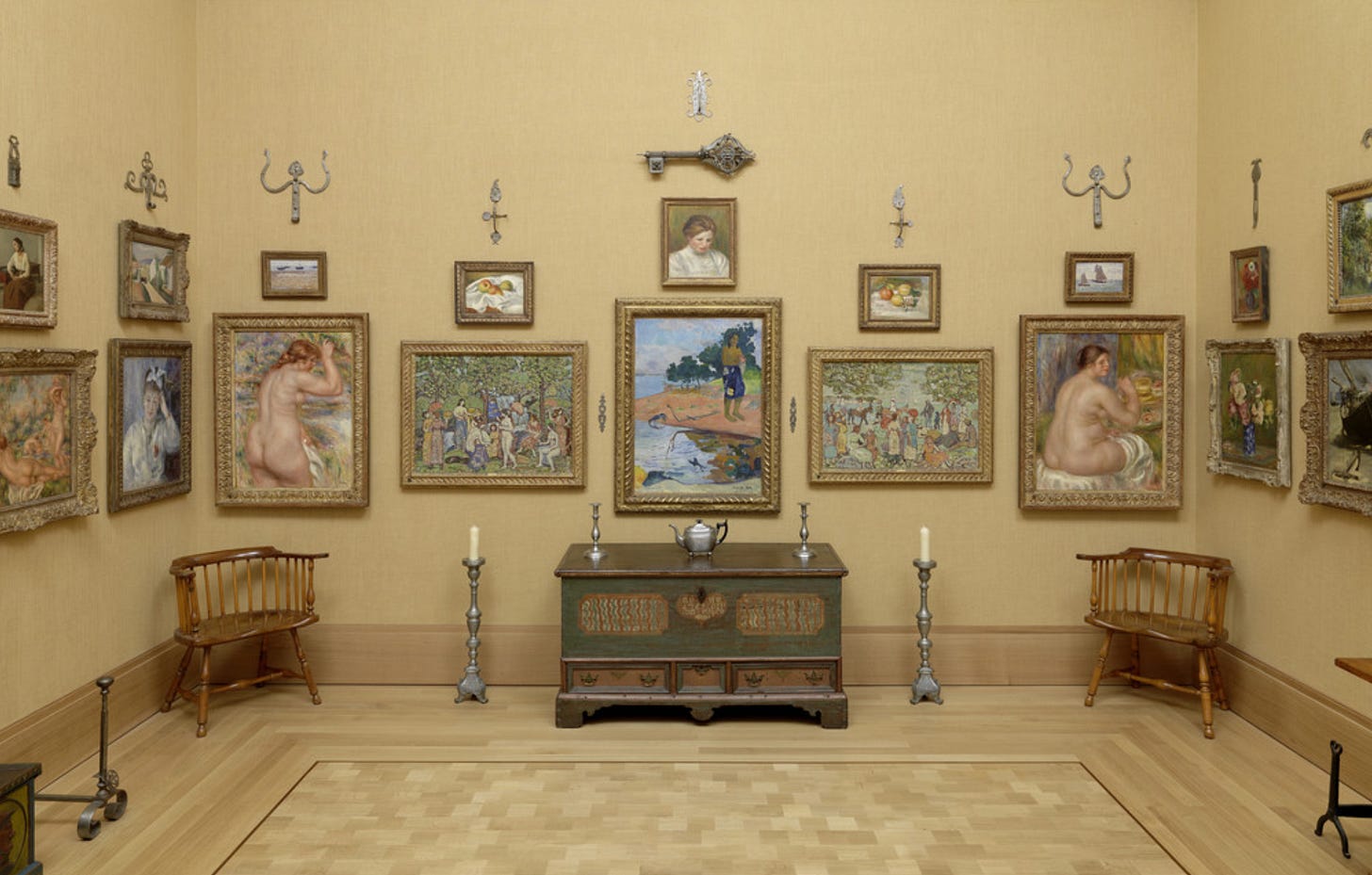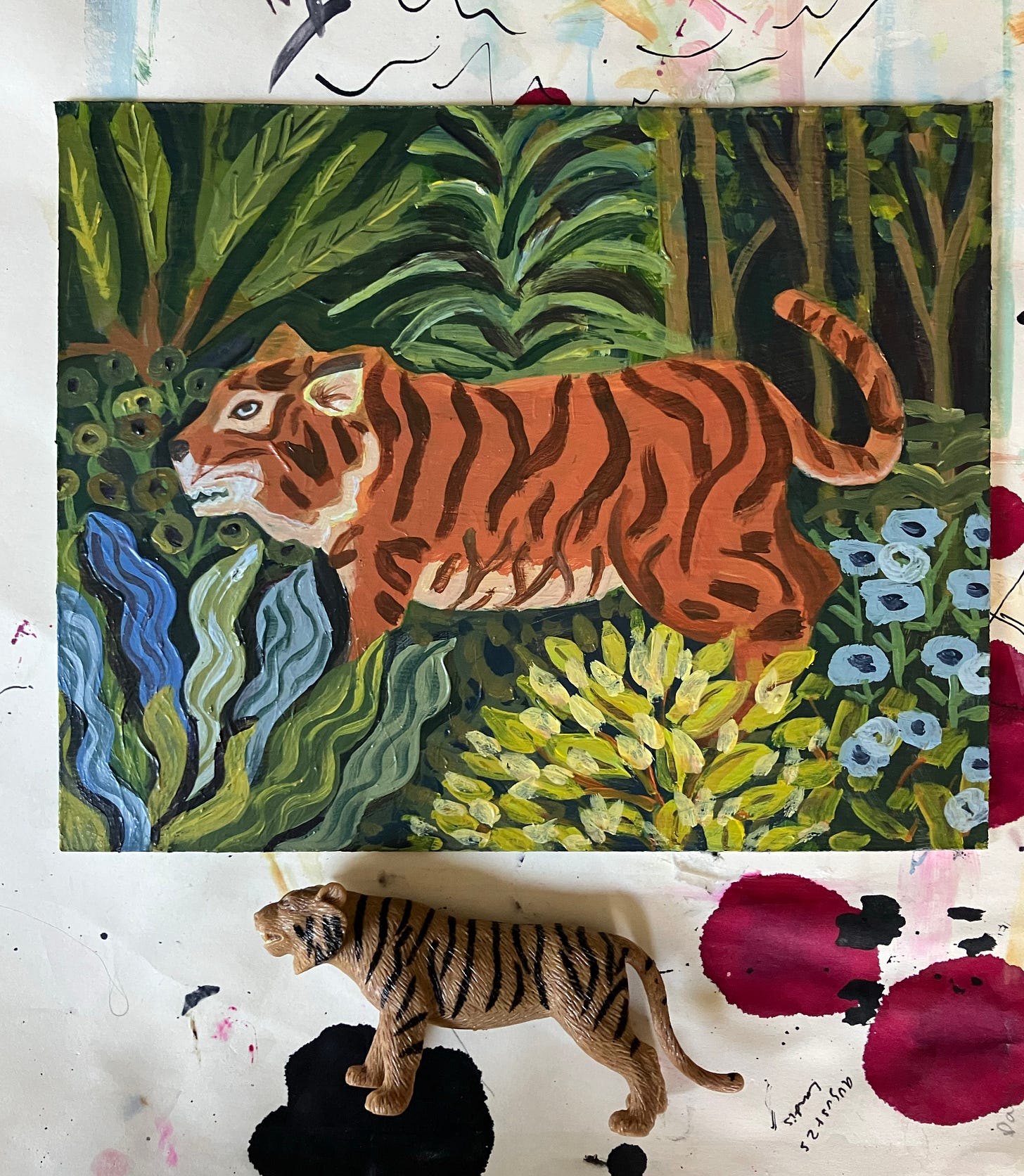Field Trip to the Barnes
My cousin Mary came to Philly over the weekend to continue my 40th birthday celebration. We headed to the Barnes Foundation to enjoy some art. I hadn’t been in a couple years and she had never been to an art museum! It felt like we were coming in with fresh eyes.
The Barnes collection is famous in Philly and in the art world and I’m sure a lot of folks reading this newsletter know way more about it than I do, but for anyone who has never experienced it I’ll try and give you a little context about what makes it really special.
This is me in front of one of the walls where there are a couple Matisses, Picassos, Modigliani all next to each other. The collection contains more Cezannes than Paris and more Renoirs than anywhere else in the world. There are no wall plaques giving any context to what you’re looking at. It can feel sort of random, but they are very intentional arrangements or “ensembles” by Barnes. Often these famous post impressionists are hanging next to folk art, metal craft, pottery, African masks, and other hand crafted tools. He saw no distinction between fine art and decorative arts. This type of viewing is less about who made the art, where and when the art was made and more about what you see when you look at the art. You’re supposed to stand back and look for connection in color, light, line and space in the art.
I love this ensemble showing the relationships and influence African art had on Picasso and Modigliani.
This is an example they use when talking about finding connections. This Y shape is echoed back and forth between the ironwork and the Matisse Painting.
Or being cheeky (literally). Look at the curves of the ironwork at the top on either end, then mirrored in the butts of the Renoir nudes, and then chairs. (fat butts rule)
Alfred Barnes came from a poor family in Philadelphia. His dad had lost his arm in the civil war and could no longer work as a butcher. Barnes made his fortune creating a successful drug company. He employed mostly people of color and women in his factories. The employees worked a six hour day instead of an eight hour day and they studied art, philosophy and religion for the other two hours. He hung artwork in the factories! He thought anyone could learn to appreciate art. People from outside the factory wanted to come and study too, so then his foundation was born in 1922.
My favorite pieces from the collection are the Pennsylvania Dutch folk art.
And I love all the pieces that feel very human. Like kids in another century blowing bubbles or jumping rope.
Woman Doing Wash Attributed to Jean-Siméon Chardin (French, 1699 - 1779)
Girl with a Jump Rope Pierre-Auguste Renoir 1876
Or the familiar comforting gesture from a different culture.
late 19th or early 20th century by Kichizô Inagaki of the Dogon peoples.
The following painting also had a weird effect on me. I don’t think it would be shown in a typical museum setting. It’s by the artist Henri Rousseau, who is known for his jungle scenes with beautiful lush foliage. It’s a portrait and friends, in my opinion, it’s bad. Like, makes me giggle, bad. And it is so strange and wonderful to see a “bad” piece of art from a world famous artist. It is such a great reminder that these things were created by people, not just geniuses. We can all make art.
Woman with Basket of Eggs Henri Rousseau 1889–95
Ok friends. That was our trip to the Barnes. You should go, it’s really great and surprising and fun.
I made this original painting inspired by Rousseau a few weeks ago. It features one of Elliott’s old toy tigers. It’s available in my shop!
My Shop: phillycornerstore.bigcartel.com
E-mail: halestormenator@gmail.com












